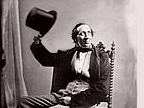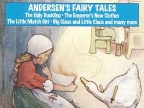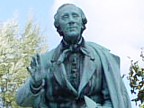168 Story tales
Hans Christian Andersen's fairy tales and stories
(about 168 - are written between 1835-1872) -
and are addressed to both adults and children.
The stories are stylistically and thematically
deeply original. In addition he wrote novels -
travel accounts (he spent a large part of his
life travelling abroad) - poems and works for
the theatre (including libretti for operas and
ballad operas).
Poetry
- fantasy tale and everyday reality
Although Andersen's work has its roots in Romanticism
- he is a modern spirit - thanks to his social
experience - his psychological insight - his belief
in progress - and influence of the industrial
development. The special quality in his fairy
tales is also precisely the combination of poetry
- fantasy tale and everyday reality.
|









